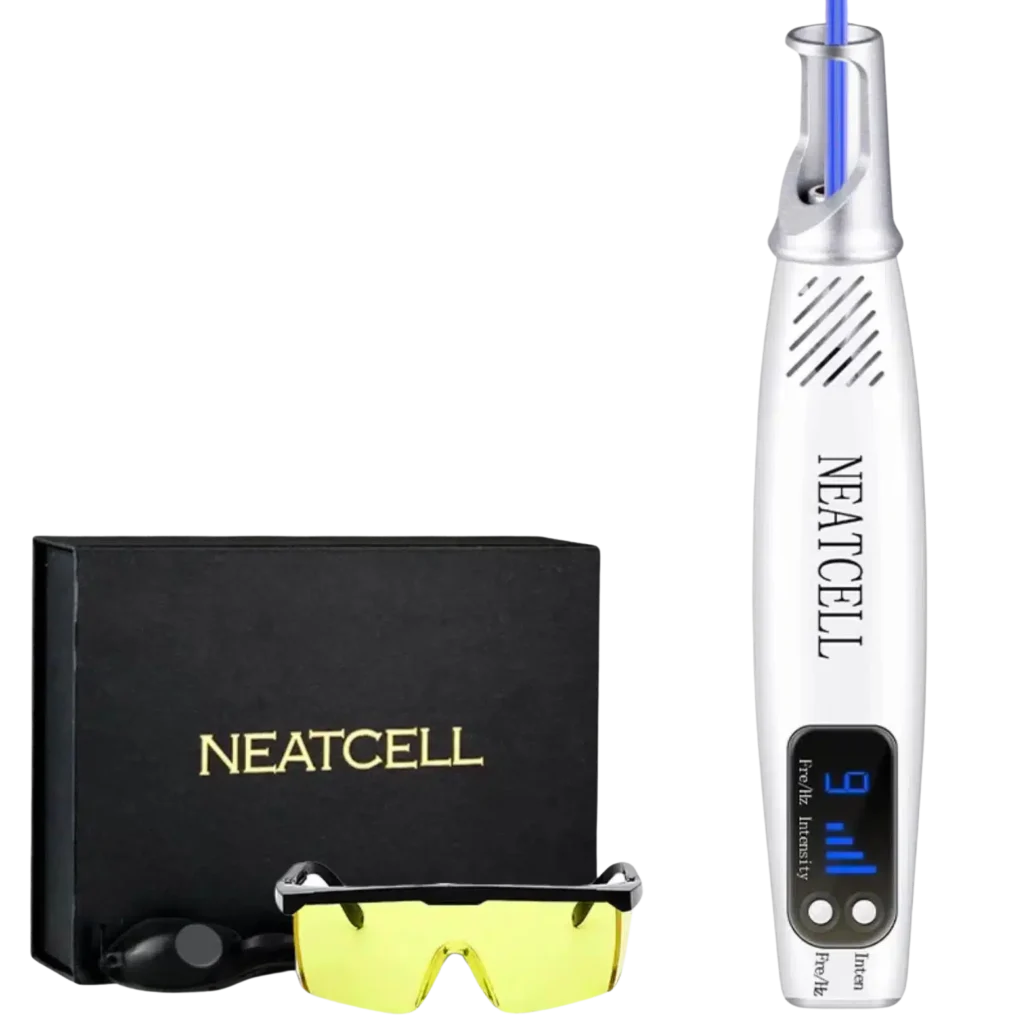The NEATCELL Picosecond Laser Pen has quickly become one of my go-to beauty gadgets for effective at-home skin and pigment treatments. As a beauty expert who often tests the latest devices, I was especially excited to try this laser pen after researching its advanced technology and reading about its safety, convenience, and effectiveness. Starting with my first impressions and the practical experience, here is my detailed review and why I believe the NEATCELL Picosecond Laser Pen is worth buying.
Table of Contents
Unboxing and First Impressions
From the moment I received the NEATCELL Picosecond Laser Pen, the packaging and instructions were clear and well-organized, instantly giving me confidence that I was dealing with a sophisticated device. The components included the laser pen itself, a charge cable, and—most crucially—protective glasses, which are especially important for the blue model. The device felt solid, ergonomic, and lightweight, making it perfectly suited for both home and salon environments.
The first thing I noticed was how the pen looked and felt—modern, professional, and, unlike many similar products, sturdy rather than flimsy. I also appreciated the clear digital display on the pen, which made it easy to select the proper intensity and frequency for treatments. This thoughtful design ensured I could use the device safely and precisely.

Advanced Technology Explained
The NEATCELL Picosecond Laser Pen utilizes ultra-short laser pulses measured in picoseconds (trillionths of a second) to target skin pigment and tattoo ink. Unlike conventional heat-based lasers, this technology bombards pigment particles with rapid pressure, shattering them into tiny dust-like fragments. These are then naturally eliminated by the body, leaving the surrounding tissue almost untouched.
This high-tech approach is versatile: you can use the pen for tattoos, dark spots, age spots, melanin deposits, moles, lentigo, and even micro-blading pigment. With nine intensity settings in the blue model and three modes in the red model, it is easy to customize the treatment for skin type, pigment color, and area size.
Real-World Application and Results
For my initial trials, I chose the blue rechargeable pen—the more powerful of the two options. After donning the protective glasses, I started with the lowest settings to gauge my skin’s reaction, as recommended in the guide. The application was straightforward: I pressed the pen tip gently against the target spot, activated the laser for 1–2 seconds, and then moved to the next spot. The sensation was mild, similar to a quick prick; those sensitive to discomfort may use a topical anesthetic, but I found it manageable.
The blue pen is ideal for colored tattoos and stubborn spots, while the red pen is geared more toward personal use for black tattoos and lighter pigment concerns. For best results, sessions should be limited to once a month per area, allowing the skin to heal and regenerate naturally between treatments. Aftercare, like applying a repair essence and avoiding sun exposure, is essential for optimal healing.
After a few days, I began seeing real changes. Freckles faded, and a small mole noticeably darkened before gradually shedding—a known sign of successful laser pigment fragmentation. On my arm, a colored tattoo that had been resistant to creams showed visible fading after just two treatments. I was careful not to over-treat any spot, and my skin remained healthy and intact, with no burns, blisters, or lasting redness.
Convenience, Safety, and Value
One of the biggest advantages of the NEATCELL pen is convenience. The rechargeable model works cordlessly for up to five hours, so there’s no cable clutter, and you can treat areas at your own pace, whenever is convenient—even while traveling, thanks to universal charging compatibility. Compared to expensive clinic sessions, the affordability makes a huge difference. For many, professional treatments can run into the thousands, but this pen delivers tangible results for a fraction of the cost.
Safety features are robust: the pen’s operation modes and clearly marked safety instructions help avoid user error. Especially with the blue pen, wearing goggles is a must due to the powerful beam and flashing light. Beginners are advised to start with the lowest intensities and gradually increase only as needed.
Who Should Use This Device?
This pen is suitable for anyone with pigment concerns, including tattoos, age spots, moles, and micro-blading pigment. For colored and deep tattoos, the blue pen is preferable, especially if you can have someone help operate it for maximum safety. The red pen is more appropriate for home solo use and basic pigment fading. If you already invest in beauty tools or want to save time and money compared to professional laser clinic visits, this device is a smart addition to your routine.
Final Verdict: Absolutely Worth Buying
After thoroughly testing the NEATCELL Picosecond Laser Pen on a range of pigment issues, I am genuinely impressed by its combination of power, safety, and user-friendly design. It delivers professional-quality results—with visible improvement in spots and fading tattoos—yet remains affordable and highly convenient compared to traditional clinic treatments.
Anyone serious about skin improvement or tattoo removal should give this pen a try. It not only saves money, but also puts advanced beauty technology squarely in consumers’ hands. The precision, safety features, and the ability to customize treatments make it one of the most effective and versatile skincare gadgets on the market. Having experienced real results first-hand, I can confidently say that the NEATCELL Picosecond Laser Pen is absolutely worth buying.